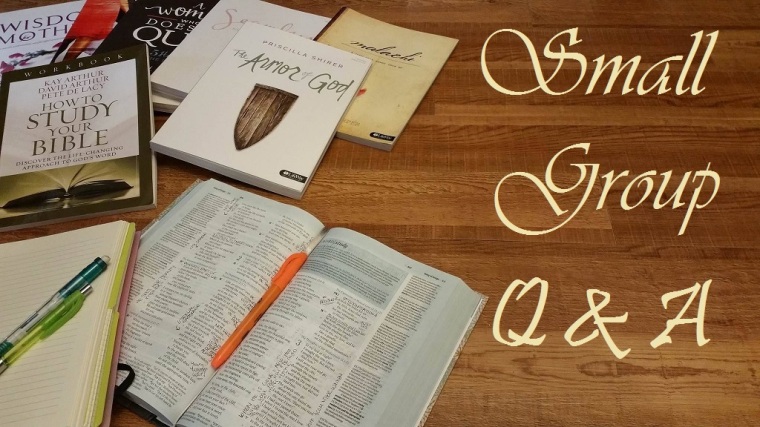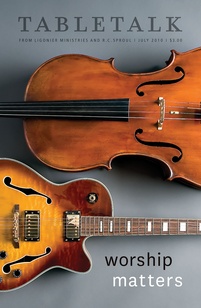
By Gena McCown, Co-Founder Women’s Ministry Council
We’ve come to the end of our series, however this series couldn’t possibly answer or address every question or need on the subject. We are going to close this series by answering questions that were submitted earlier in the series, and hopefully in doing so … we’ll fill the gaps.
Q: What is the difference between a Small Group, Life Group, Adult Sunday School, and Bible Study? Do we need them all, and if so why?
A: To a certain extent, it really is semantics. In many churches these terms are interchangeable, Small Groups and Life Groups are especially. Generally speaking, Small Groups and Life Groups are intentional groups of church members (usually under 12 people) that are “going through life” together. They may study the bible, a helpful book, or even weekly topical studies together. The purpose of the group is spiritual growth, relationship building, and accountability. Bible Studies and Adult Sunday School, are more akin to traditional models of group study. They are generally larger, and stick to scriptural study. This may be in the way of expository (line by line exploration of the scriptures) or using printed Bible Study curriculum. Over the years, the lines have smudged a bit and Bible Study Groups may elect to study a helpful book, or a small group may grow into a “large group”. I believe they all share the same goal for spiritual growth, although small groups and life groups create more relationships building opportunities.
Q: How do I get people to sign up for my Small Group?
A: There are a few ways to get interest built in your small group. First, I think we need to do a better job of talking up our small groups before the official sign up period. This also includes making sure that we are clear about the details, date… time… place… number of weeks… childcare… cost… etc. Bring it up among your friends, post it on your facebook page, etc. In the churches we should also make a purpose to highlight small groups leading up to the signs ups with intro videos playing between services, information in the church lobby, etc.
Second, personal invitation is a great way to bring people into the fold, it tells the women you encounter that you want to get to know them better or would like to share this experience of growing in faith with them. One thing that can happen (it’s happen to me personally) is that as life groups grow and leaders are developed your personal circle of friends may become life group leaders. You can actually run out of women to invite, because you don’t know them. This means you need to get intentional about meeting new women in the church.
Third, we have to remember the saying “out of sight, out of mind”. Many people have the intention of signing up for small groups & will forget. It is important that when we are announcing small groups at church or a women’s event that we have a way for them to sign up immediately. A kiosk in the lobby that directs to a digital sign up or an old fashioned table with clipboards set up in the lobby, either are great ways to get the women to sign up before they get home and life gets in the way. Another option is a Small Groups Kick-off Brunch.
Q: How do we fund our small groups?
A: If small groups are part of the church vision, then when it comes to the purchasing of leader materials (video, leader guide, etc) this is an investment the church or Women’s Ministry makes. Then, each participant can purchase their own workbook. Many publishers off bulk discounts on materials that could save the participants money, but this requires collecting the $ in advance or the church purchasing materials that may go unused if the sign up is less than expected. I suggest picking a publisher that has a good array of materials, so that you can build an account and relationship with that publisher.
Present your small group menu well in advance for your church members to sign up, and take payment when they sign up. This allows you to only order the materials you need. People who have paid at the time they sign up are more likely to stick through the commitment as well. Then, when the Small Group meets for the first time, you can distribute their books. This also helps your leaders know exactly how many people to plan for. When we allow people to sign up, and then purchase their own workbook… we have no clue on who is actually going to follow through & show up. When we require our Small Group leaders to fund the group themselves, we lessen the number of leaders who are going to volunteer to lead.
If you are a small church, church plant, or a ministry independent of a church… funding the study may not be in the budget. Then, as a Small Group leader consider dispersing the cost of the materials among everyone in the group. $100 leader kid, $10 workbook… 10 women in the group, everyone pays $20. Or if the church can budget $50 towards the leader kit, each woman pays just $15. Also consider, if you are on a tight budget, video series where you don’t need the workbooks (or vice versa). Share materials with other Small Group Leaders, or find a larger church you can establish a relationship with and borrow materials. Or, teach an expository or weekly topical study that doesn’t require anything more than your bible.
Q: How can I lead good discussions in our group vs. asking “what does this scripture say”?
A: I think discussion questions are a huge trip up for some small group leaders, which is why they like to purchase curriculum versus writing/teaching their own. In this case, the leader guide generally has discussion question prompts in place and you are following a script. I believe this is a great option for new leaders, because they can get their feet wet in the process of small group leading. For seasoned leaders, what I suggest is to begin with the purpose you chose this particular study. What is the goal, what do you hope the women achieve by completing this study independently and as a group. Once you identify your goal for the study, you can then create questions that are going to move the women toward that goal. Creating questions that gently guide them to the “ah-ha” moment. In fact, this is why I strongly suggest having your goal in place before you even pick the study. If you are picking a study because it’s popular, or “looks good”, there isn’t a goal in place. Without a goal, you will struggle to come up with engaging questions. With a goal first, you will find your questions are in place, and you select a study that helps answer those questions.
If you questions are not your thing, you can always ask someone else in your group to lead that portion. I must admit, some people are just better at it than others. You could even assign that task to multiple women in the study, each week a different person is tasked with writing the discussion questions. Also, when you preview the material ahead of the group vs. watching it for the first time with them… take notes. The points you thought were worth writing down can become the launching point of the questions you ask.
Q: When should a Small Group be “OPEN”, “CLOSED”, or “DROP IN” in regards to attendance/members.
A: There are only two Small Groups in which I think “DROP IN” is appropriate. 1st, is the very first week. If someone isn’t certain if this particular study is something they want to commit to, allow them to drop in for the first session and view the introduction with the group. 2nd, is if your Small Group is a topical study that changes from week to week. This allows the women to drop in only on the topics that interest them. I love this option for seasoned believers or busy women who are trying to plug in but their schedule doesn’t allow for a long term commitment.
Open Groups are great for big topics. For example if you church offers Dave Ramsey Financial Peace as a Small Group, this is a perfect for Open Groups. Expository or Book By Book Study Groups are also appropriate for Open Groups, as they are working through the scriptures. Open Groups are great for new leaders who are leading their first small group, or leaders who are more interested in getting to know other women in the church. Open Groups are important to have so that the women who attend your church have an opportunity to find their fit within a group of women vs. being thrust into a group where they can’t connect.
Equally, Closed Groups are also important to have in the church because these are the groups where deeper fellowship and accountability occur. Most Closed Groups start that way, a group of women who decided to meet together as a Small Group. However they are not advertising their group to the church, but letting you as the WM Leader know that they are part of a group. Other Closed Groups start off as Drop In or Open Groups, that over time relationships began to form and they make the conscious decision to continue close the group to new members. Closed Groups are important because the relationships that develop are deeper, there is accountability in this group, personal information begins to be shared, etc. At this point it is important to protect that group by closing the group. Then it is up to the leader and group to determine if, when, and who is added to the group.
It is my belief that all three of these types of groups should be happening in your church. Open Groups and Drop In Groups are the first stop usually for new members in the church, guests, etc. This is where they can test the waters, get introduced to how small groups work, and find their fit. Closed Groups are the ones where real relationships are developed, and I believe the long term goal for each woman in your church should be to move from an Open/Drop In Group to a Closed Group. Our Small Group menus should be very intentional.
Q: How Do I Refresh Interest After A Year?
A: When interest starts to wane, the first question we need to really understand is WHY that happened. Was the study too intense? Too long? Did we notice interest started to drop about half way through? Or, did women disengage almost at the beginning? Then we can move onto examining other possibilities.
If a study is too long, or too intense, it could just mean that the women need a break. Either a literal break, taking a few weeks or months off. Or, a break in the material itself and as a leader I need to find something a little bit lighter for our next round. If we notice that somewhere between the beginning and middle, women were already disengaging… that is generally a good indicator that the study materials were lacking in some way. Maybe the speaker on the video was not engaging, wasn’t understood, or the content seemed very dated. It could be that the video was great, but the homework in between was monotonous or unchallenging. On the other hand it could be that the homework was overwhelming. I’ve experienced both. This is why I stand firm on intentional small group study selections, we need to not just grab an interesting title off the shelf, but walk through it ourselves or seek suggestions from others. You just never know what you are going to get.
If none of the above seems to be the case, my next suggestion is to ask the group. Maybe their needs have changed, or it’s time to reevaluate the goal for the group. If your goal as leader was to strengthen the marriages of your group members, and you have done six studies on a row relating to relationship building… maybe it’s time to mix it up. Move to a study that actually is willing to talk about the physical aspects of marriage. Has your group moved from young married couples to married couples with children. Then it may be time to switch from studies on marriage to studies on parenting. Talk to the group members and see what they want to study next. If you’ve been leading expository studies on the Old Testament, maybe it’s time to take a jump forward to the Gospels for a bit. Or, it may be time to bring in fresh faces and invite some new women to your closed group. You may also need to consider that your group is ready to split, and begin leading their own groups. Finally, you need to prayerfully consider if the Lord is prompting you to take a break. It could be that you are entering a season of life where you are called to be the student.
When interest wanes, something in the dynamic of the group isn’t working. Once you have explored all of the questions about the form and function of the group, there are only technical questions left. Such as… has our groups availability changed and we need to set a new day/time, has this group just met it’s purpose and it is time to disband entirely.








